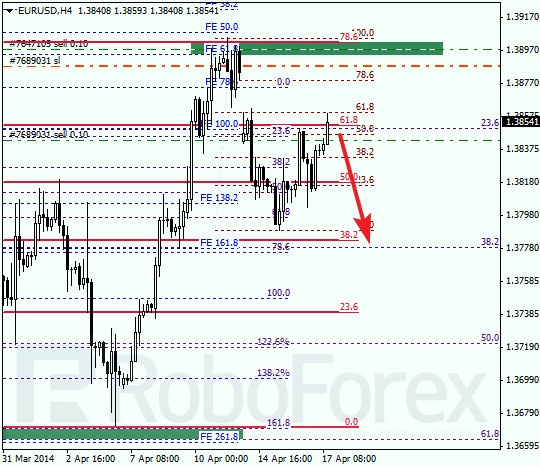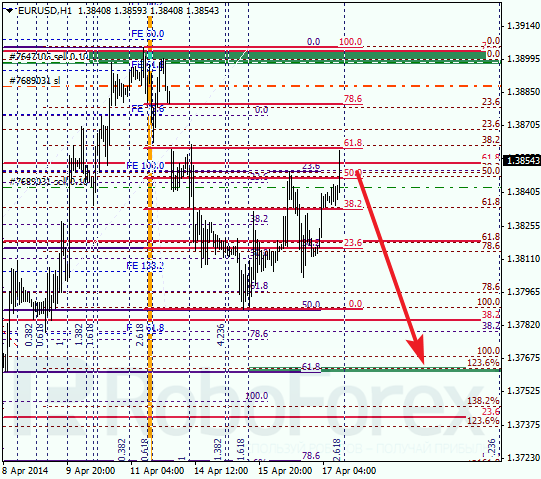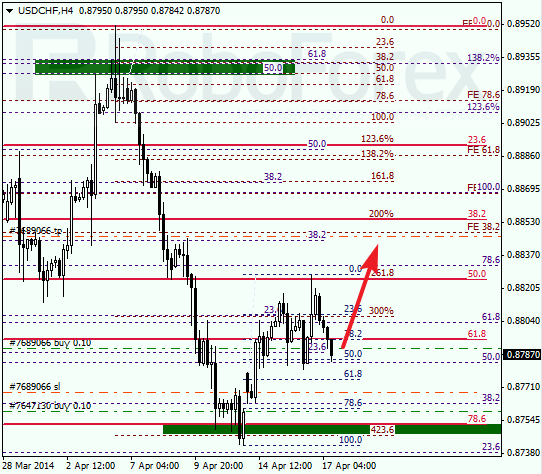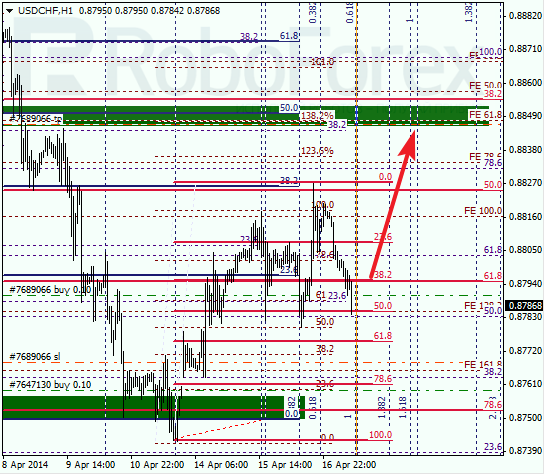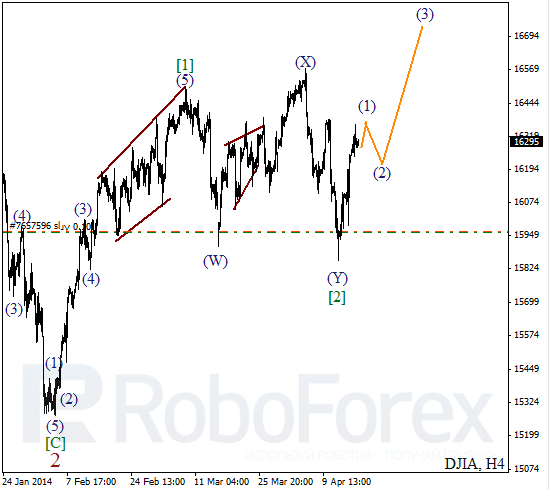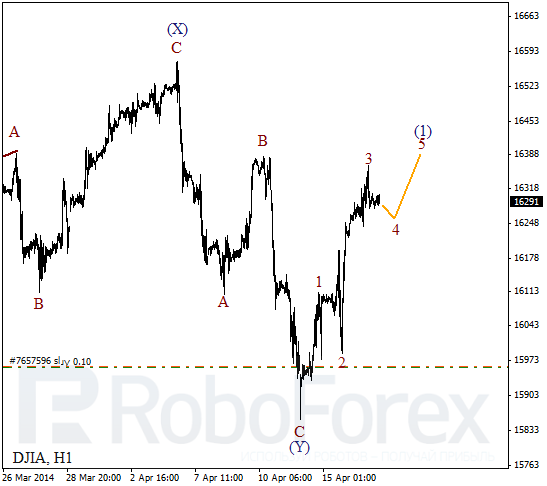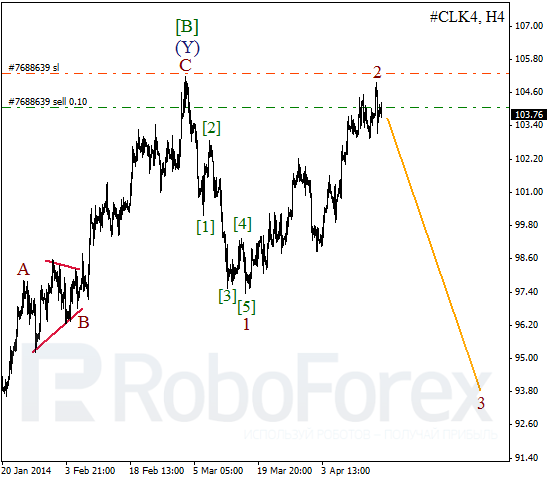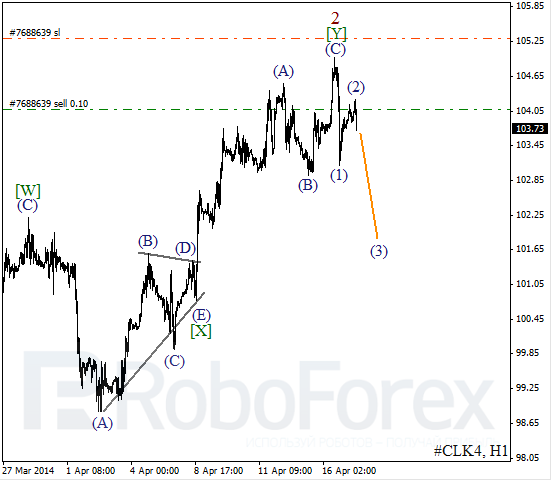Source: JT Long of The Gold Report (4/16/14)
http://www.theaureport.com/pub/na/salman-partners-raymond-goldie-copper-is-pathological-and-suffers-from-sad-but-it-has-value
Dr. Copper may be in a supercycle, but there are serious problems. In this interview with The Gold Report, Salman Partners’ Vice President of Commodity Economics Raymond Goldie explains why even though the base metal acts pathologically and has a bad case of seasonal affective disorder, these six equities are priced below their intrinsic value.

The Gold Report: You are giving a presentation at the Society for Mining, Metallurgy & Exploration Current Trends in Mining Finance Conference called Diagnosing the Doctor, which refers to assessing the supply and demand problems for Dr. Copper as a way to understand what is ailing all the mining products today. Are we in a supercycle? What is the meaning of a sustainable supercycle?
Raymond Goldie: I suppose it’s best to answer your second question first—What is the meaning of a sustainable supercycle?—because a lot of people use the word supercycle to describe the wonderful state that we had beginning in the early part of this century, when metal prices kept going up, commodity prices kept going up, seemingly forever. I’m a little less restrictive on what I define as a supercycle. I think a supercycle is any period in which we have commodity prices higher than their long-term average values. On that basis, even allowing for overall inflation, we’ve been in a supercycle since 2004. We’re still in it, although for a few months regrettably at the end of 2008 we popped out of it. But right now we are in a supercycle.
TGR: What are the fundamentals keeping us in your definition of a supercycle?
RG: The usual reason is China. It’s the biggest consumer of most of the commodities in the world and has the biggest growth in consumption of most of the commodities in the world. But what that analysis tends to overlook is that production of most commodities in China has been increasing at roughly the same rate as consumption in China. So, on balance, China may not be as big a contributor to the supercycle as we’ve imagined.
TGR: Does that mean that the Western world is playing a larger role in supporting the supercycle than we give it credit for?
RG: When it comes to assessing supply and demand from Asia, it is important to consider Chinese economic data, which a recent Bloomberg article equates to some of the meat served in low-cost restaurants. We don’t know where it comes from and don’t really know what it means. It’s not easy to put a lot of credence on Chinese economic numbers, so it’s hard to tell the extent to which China does affect supply and demand.
But one thing that we can count on is the diligence of people who sit at borders with clipboards looking at stuff crossing borders. They are paid to make sure that the right duties get paid and the ships are carrying what they’re supposed to be carrying. If we look at China’s trade with the rest of the world, those numbers are fairly reliable, even if the numbers for what’s going on inside China are not reliable. Since 2008, the dark days when the world seemed to have ended, China’s imports of copper from the rest of the world have grown 41% per annum.
TGR: And what about the supply side?
RG: I think the single most important reason that we’re in a sustainable supercycle is that we haven’t invested enough in finding more resources. The supply-side constraints are probably why prices are higher than the long-term trend in prices.
TGR: Why has it been so difficult to predict how much copper will be produced in a given year if it takes so long to bring a mine to production?
RG: Since about 2003 analysts have consistently overestimated the production of copper. My theory for the consistent shortfall is that before 2003, when strikes, landslides, earthquakes, storms, civil unrest, late trains and the like slowed down production, someone in the head office would send a cable calling for the mining of high-grade ore to make up the difference. But since 2003, there hasn’t been any high-grade ore to mine because of a lack of investment in new resources. And this happens year after year. About 7% less copper is produced each year than the mines predicted at the start of the year.
TGR: So why isn’t that inconsistency causing the price to go up?
RG: Maybe it is. There has certainly been what I’ve called a pathological situation in the copper markets because typically the relationship between copper inventories—the stuff that’s sitting around in warehouses—and prices is that the lower the inventories, the higher the price. But since 2005, in the Western world—we don’t know what’s going on in China—inventories have gone up 185%. Typically, that would mean prices go down, right? But, no, prices have gone up 95%. That may be one of the reasons that we’re consistently producing less of the stuff than we thought we could.
TGR: You have said that the pitch-point™ curve* for supply and demand compared to prices is pathological. Is that because of the role of recycling in meeting some of the demand?
RG: I think it could be because it used to be that every pound that was in inventory was backed by all the copper that the mines would produce and all the copper that scrap yards would produce. The amount that the scrap yards produce has been declining, in large part because Asians have been very diligent about taking scrap from North America and refining it into good usable copper again. But, again, it’s hard to get good figures for how much copper there is in scrap yards so that answer is probably yes, the declining use of copper in recycling is probably one of the reasons why we’ve seen prices go up even though inventories have also gone up. But it’s hard to be more precise than that.
TGR: You have also said that copper has seasonal affective disorder (SAD). What causes that?
RG: That’s right, it does. I can tell you what SAD is, but I can’t tell you exactly what causes it. In the good old days of the London Metal Exchange (LME), the saying was “sell in May and go away.” And that was always a wonderful excuse to take an English summer holiday and not bother coming back to trade copper until September or October. Now, the peak seems to be around the end of February and the end of June tends to be the bottom in copper prices. It’s pretty consistent. Year after year we see that effect, but what causes it, I don’t know.
TGR: Because copper is so important for growth, is it feasible that it could be used as the world reserve currency instead of gold or the dollar? What would that look like?
RG: Copper is being used as a reserve currency in China right now. Some of the importers will use the copper that they hold as collateral for loans that they make from various banks in China. One of the advantages of copper as collateral is that unlike wheat, silver or potash, you can store it outside. Even in the rain, copper will keep its value, and there’s always a use for the stuff.
But to talk about copper as a reserve currency for the whole world is not practical. If a country is holding reserves of $1 trillion, it would have to have 150 million tons on reserve. That is about eight and a half years of copper consumption just sitting there. But certainly copper is being used as a currency on a small scale, as it’s being used now in China.
TGR: What prices are you using for copper going forward in the rest of 2014?
RG: Since 2003 when the fundamentals of the copper business changed so significantly, the forward prices on the LME have been a much better forecaster of copper prices than we analysts. This afternoon, the LME is telling me that if I buy copper now for delivery in 10 years, I would have to pay $3.02/pound ($3.02/lb). That’s as good as any forecast I have for the long-term price of copper. If you were to buy a pound of copper for delivery tomorrow, it’s pretty much the same as where the price of copper is today.
TGR: If copper prices look to be fairly flat going forward, why do copper equities tend to outperform the metal?
RG: This gets back to the unwieldy nature of copper as a store of value. Let’s say you were thinking of retiring and decided to make off with all of your fortune, say $3 million ($3M), and drive away into the sunset. Now, if you put that in the form of gold, $3M would weigh less than 200 lb; it would fit in the trunk of your car. But $3M worth of copper would weigh 450 tons. That is why when people get enthusiastic about buying gold, they often buy gold bullion. But when they’re thinking of buying copper, the unwieldy nature of buying copper metal means they are better off with the equities. That’s why the equities have done about the same or even a little better than the price of copper itself. That certainly has not been the case with gold.
TGR: Are the copper companies less risky than some of the gold companies?
RG: Riskiness is a feature of the things that Mother Nature can fling at us or the surprises that come with the election of a government that no one expected and that government nationalizes some of its assets. Most of the companies that I follow are managed by a lot of gray hairs; they’ve seen all the unpleasant things that can happen. Most of the ones that I tend to look at are well managed, and they include the big producers, like Freeport-McMoRan Copper & Gold Inc. (FCX:NYSE), whose biggest growth comes from the Democratic Republic of Congo, where there are political risks, but Freeport is skilled enough and experienced enough in operating in parts of the world where there is high political risk that it has so far been able to stave off most political concerns.
Another company that has also done well in that part of the world is First Quantum Minerals Ltd. (FM:TSX; FQM:LSE), a Canadian company that just bought Inmet Mining Corp. and, through its acquisition of Inmet, is building a new copper mine in Panama. Of the companies I cover, First Quantum stands out for being relatively low risk and high return.
TGR: Does First Quantum’s acquisition make it stronger because it is diversified?
RG: Certainly, it’s diversifying geographically. Before the acquisition most of its assets were in Zambia, which has been a good address for a mine, but that may not always be the case. Having assets in Panama, Finland and Turkey is not a bad idea.
TGR: What about some smaller companies that you cover in the copper space?
RG: It’s pretty hard to find a small copper producer. The only one I cover is Amerigo Resources Ltd. (ARG:TSX). It operates a “mine” in one of the best addresses in the world for a copper mine, and that’s Chile. But instead of mining the stuff, it processes the tailings from one of the world’s biggest copper mines, El Teniente. It is profitable and it is expanding its operations.
TGR: Do you evaluate a company in the tailing business very differently than a company like First Quantum?
RG: I don’t actually. I generally use the standard textbook discounted cash flow valuation method. For a mine in production, like Amerigo’s operations, I use a low discount rate. For potential expansion, I use a higher discount rate because this is an unproven technology there. For First Quantum, the same thing. For First Quantum’s existing operations, I use a lower discount rate than for valuing the operations that it hopes to bring onstream in a few years in Panama or Zambia. I use an even higher discount rate on something that isn’t in production yet, simply because of the technological, political and community risks associated with that prospect.
TGR: Do you follow any explorers?
RG: The explorers I cover are NovaCopper Inc. (NCQ:TSX.V; NCQ:NYSE.MKT), Curis Resources Ltd. (CUV:TSX.V; PCCRF:OTCPK) and Nautilus Minerals Inc. (NUS:TSX).
NovaCopper is a company that has one of the world’s highest-grade copper deposits, but it’s in a part of Alaska that requires a road to be built. Until that road is built, probably around 2021, the mine is going to sit there. So the risk in that case, even though it’s in the U.S., is a political risk.
TGR: Does NovaCopper’s resource make the risk worthwhile?
RG: I assume that it’s not until about 2025 when it comes into production, and I discount that back to the present. Every year you discount it, you make it worth a little less or you value it at a little less. If NovaCopper were in production today, it might be worth $10/share, but because it’s so far in the future, I think it’s worth about $5/share. The company is trading under $2/share, so there is upside.
TGR: What about the risk-reward story for Curis? It is in the U.S. as well, a fairly safe jurisdiction.
RG: Curis is also a political risk story. The company hopes to use a fairly new method of extracting copper, which is pumping fluids into the ground, dissolving the copper and bringing it up to the surface. No shovels and excavators required. It looks like an oil well field. It surrounds the town of Florence, Arizona, which does not allow mining, but the half of the deposit surrounding the town has state approval.
Curis has been waiting more than a year and a half for the federal Environmental Protection Agency’s (EPA) approval. I don’t know how long it’s going to take for the EPA to act, but when it does give its comment, it is likely to be approval. One of the lessons I have learned is that if any mining company tells you it thinks the government will approve its project in such and such a time, you can usually be confident in adding another year. Companies always tend to underestimate how long it takes governments to get around to doing anything.
TGR: How about the risk and reward for the last one you mentioned, Nautilus?
RG: That’s another government story. It’s also a new technology story. It’s the most exciting and interesting of all the companies I cover because it has identified high-grade copper, zinc, gold and silver-bearing deposits right at the surface of the sea floor a couple of miles under the ocean off Papua New Guinea. It has just completed the first of the three machines it needs to dig the stuff up from the sea floor. The government has a legal dispute with the company, which hasn’t been resolved yet. So there are both technological and political risks. And it also is a cheap stock.
TGR: What’s the timeline on these? Are these all long-term investments?
RG: NovaCopper could be up and running by 2025. Amerigo is in production right now with expansion dependent on government approval. Once that has happened, it is probably two or three years before that comes into production. Once Curis gets EPA approval, it should be in production in about 18 months. First Quantum’s Panama project should be in production around 2016. Nautilus is two or three years away from production once it resolves its differences with the government.
TGR: With all of these great ideas, what advice do you have for resource investors who are looking to keep their portfolios healthy during the next two or three years while they wait for some of these things to happen?
RG: There are two questions that investors should ask about any investment they make: Is the value there? When should I seize on that value? Most copper mining stocks are trading as if the price of copper were $2/lb and is going to be about $2/lb forever. But copper on the LME 10 years out is actually $3/lb. That means the equities are definitely a value story. As to when to buy it, given the SAD cycle we mentioned earlier, investors might want to wait until the end of June.
TGR: Thank you for your advice.
RG: Thank you.
*”Pitch-point curve™” is a term trademarked by Raymond Goldie.
Raymond Goldie, vice-president of commodity economics and senior mining analyst at Salman Partners, has extensive experience in the investment business, including more than 20 years as a mining analyst covering non-precious-non-ferrous and precious minerals (gold, silver, PGEs, diamonds) and fertilizer companies. In geology, Goldie holds a Bachelor of Science from Victoria University in Wellington, New Zealand; a Master of Science from McGill University; a Ph.D. from Queens University; and a Diploma in Business Administration from the University of Toronto.
Want to read more Gold Report interviews like this? Sign up for our free e-newsletter, and you’ll learn when new articles have been published. To see recent interviews with industry analysts and commentators, visit our Streetwise Interviews page.
DISCLOSURE:
1) JT Long conducted this interview for Streetwise Reports LLC, publisher of The Gold Report, The Energy Report, The Life Sciences Report and The Mining Report, and provides services to Streetwise Reports as an employee. She owns, or her family owns, shares of the following companies mentioned in this interview: None.
2) The following companies mentioned in the interview are sponsors of Streetwise Reports: None. Streetwise Reports does not accept stock in exchange for its services.
3) Raymond Goldie: I own, or my family owns, shares of the following companies mentioned in this interview: None. I personally am, or my family is, paid by the following companies mentioned in this interview: None. My company has a financial relationship with the following companies mentioned in this interview: None. I was not paid by Streetwise Reports for participating in this interview. Comments and opinions expressed are my own comments and opinions. I had the opportunity to review the interview for accuracy as of the date of the interview and am responsible for the content of the interview.
4) Interviews are edited for clarity. Streetwise Reports does not make editorial comments or change experts’ statements without their consent.
5) The interview does not constitute investment advice. Each reader is encouraged to consult with his or her individual financial professional and any action a reader takes as a result of information presented here is his or her own responsibility. By opening this page, each reader accepts and agrees to Streetwise Reports’ terms of use and full legal disclaimer.
6) From time to time, Streetwise Reports LLC and its directors, officers, employees or members of their families, as well as persons interviewed for articles and interviews on the site, may have a long or short position in securities mentioned. Directors, officers, employees or members of their families are prohibited from making purchases and/or sales of those securities in the open market or otherwise during the up-to-four-week interval from the time of the interview until after it publishes.
Streetwise – The Gold Report is Copyright © 2014 by Streetwise Reports LLC. All rights are reserved. Streetwise Reports LLC hereby grants an unrestricted license to use or disseminate this copyrighted material (i) only in whole (and always including this disclaimer), but (ii) never in part.
Streetwise Reports LLC does not guarantee the accuracy or thoroughness of the information reported.
Streetwise Reports LLC receives a fee from companies that are listed on the home page in the In This Issue section. Their sponsor pages may be considered advertising for the purposes of 18 U.S.C. 1734.
Participating companies provide the logos used in The Gold Report. These logos are trademarks and are the property of the individual companies.
101 Second St., Suite 110
Petaluma, CA 94952
Tel.: (707) 981-8999
Fax: (707) 981-8998
Email: jluther@streetwisereports.com
